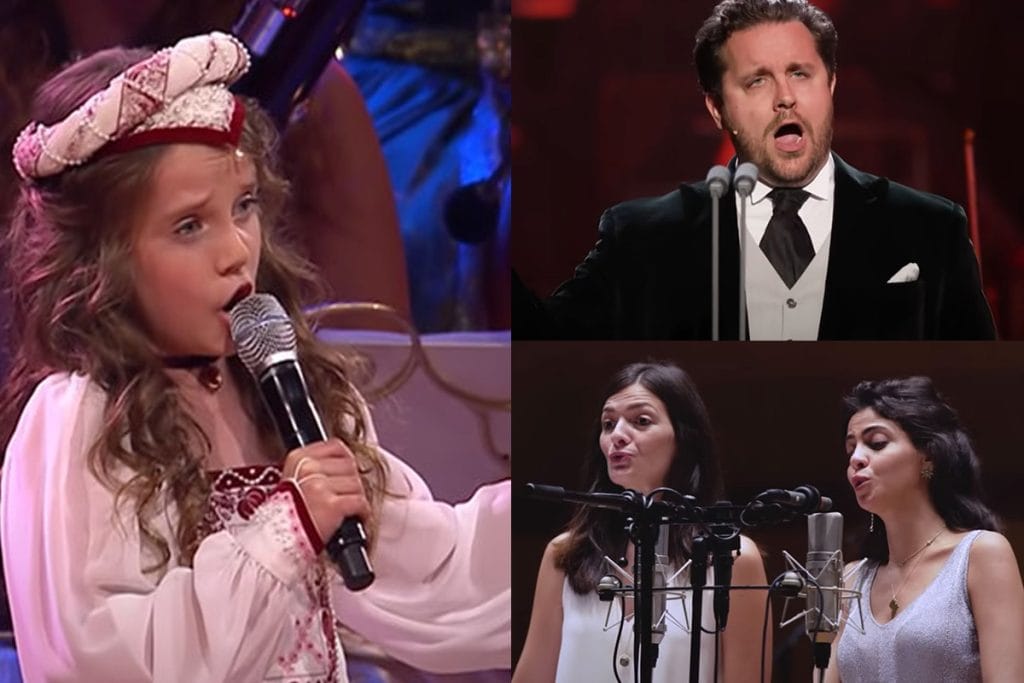
Operas contain some of the greatest expressions of the human voice as a musical instrument. The world’s greatest voices (who have been classically trained) often use operatic pieces to display their skill and talent.
Whether you’re looking for a song to add to your repertoire, or just want to revel in some opera songs, you’ve come to the right place. All of the following songs are quite popular and can serve as an introduction to opera.
Vincenzo Bellini – Casta Diva
Casta Diva, from Bellini’s opera, Norma, is a massively popular song selection for any soprano. To say that Casta Diva is filled with sweeping, emotional expression is an understatement.
It’s for that very reason that Casta Diva has continued to be sung well after the opera’s debut in 1831. However, at the time, Casta Diva was received with little recognition among audiences.
After a few years, Casta Diva helped to make Norma one of the most popular operas throughout Europe.
Giuseppe Verdi – Si Un Jour
Verdi is one of the biggest names as far as opera is concerned, and 1862’s La Forza Del Destino is just one of his popular works. This particular opera has a rich history, including a legend that the work might actually be cursed.
One of the most famous arias from La Forza Del Destino is the song, Si Un Jour. This piece swells with emotion and utilizes dynamics for a heightened impact on the listener.
Giacomo Puccini – Quando Me’n Vo (Musetta’s Waltz)
https://www.youtube.com/watch?v=KP3lV-YvCYM
Puccini is a name that everyone probably recognizes and correlates to being associated with opera. That’s because Puccini composed some of the greatest operas near the turn of the 20th century.
La Bohème is just one of his notable operas, from which the aria, Quando Me’n Vo comes. Interestingly enough, the melody of this classic work found its way into a pair of 1950s pop songs, helping them to become bonafide hits in their own right.
Georges Bizet – Habanera
Carmen might be one of the most popular operas in all of history, though its 1875 debut was met with mixed reviews in Paris. The music in Carmen is especially noteworthy and remains just one example of Georges Bizet’s greatest work.
Habanera is an especially popular aria, which is used to introduce the character Carmen to the audience. You’ll immediately recognize this lighthearted song when the melody counterpoints its marching bass line rhythm.
Hector Berlioz – Minuet Of The Wills-O’-The-Wisp
How many times have you heard a story involving somebody selling their soul to the devil? The trope has been extremely common in the music world, with the original legend coming from Goethe’s Faust.
In December of 1846, Hector Berlioz debuted his opera, The Damnation Of Faust, dramatizing this age-old tale. One of the choice cuts that has become popular over time is the song, Minuet Of The Wills-O’-The-Wisp.
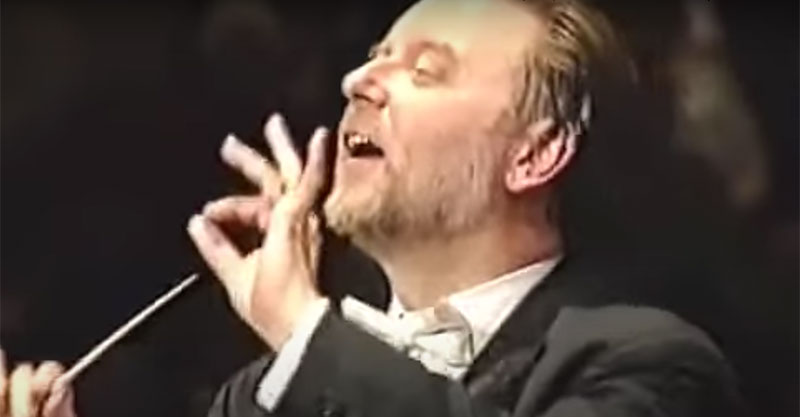
Wolfgang Amadeus Mozart – Voi Che Sapete
https://www.youtube.com/watch?v=1nRObrCLKNs
If your knowledge of Mozart is pretty surface-level, it might be surprising to find out that he composed operas. In fact, he’s responsible for composing one of the most well-known operas in all of history, The Marriage Of Figaro.
This opera has quite a few options for anyone looking for a time-tested piece for their repertoire. Voi Che Sapete is one selection to consider, which makes its appearance in the opera in Act 2.
Pyotr Ilyich Tchaikovsky – Polonaise
Russia undoubtedly produced some of the greatest composers in the world in the late 1800s, which Tchaikovsky being a notable example. His opera, Eugene Onegin made its debut in 1879 and is filled to the brim with cinematic pieces.
Like many of the operas on this list, Eugene Onegin actually wasn’t an immediate hit among audiences. However, the opera did begin to win over audiences in other countries, largely due to sweeping orchestral pieces like Polonaise.
Giuseppe Verdi – Brindisi
Some of the most well-known opera pieces have melodies that are instantly recognizable to just about anyone. Verdi’s Brindisi is one of these songs, which opens with a signature melody in the string section
Brindisi is an extremely upbeat song that is sure to lift your spirits, likely because the song is actually a drinking song. You’re going to need some friends with good pipes if you want to sing this the next time you’re passing around a bottle.
Richard Wagner – Ride Of The Valkyries
Are you familiar with the famous helicopter scene in the film, Apocalypse Now? If so, you know that there is a particular song that plays during the violent explosions that take place throughout the scene.
That song is Ride Of The Valkyries and is undoubtedly one of Richard Wagner’s best-known operatic pieces. This song continues to be used to this day for anything that is meant to display the fortitude and resilience of human nature.
Henry Purcell – When I Am Laid In Earth
Are you looking for what many have considered to be the saddest arias in the history of opera? You’ll want to take a look at Dido’s Lament, from Henry Purcell’s opera, Dido And Aeneas.
The song is often known as When I Am Laid In Earth, and as you can imagine, it deals with the notion of being remembered after death. In the opera, Dido sings this just moments before taking her own life.
Wolfgang Amadeus Mozart – Lacrimosa
One of Mozart’s most monumental pieces of work is his Requiem, which was unfortunately unfinished due to death. Mozart’s Requiem is definitely quite a bit of work for both the orchestra and its choir, but fortunately, is marked with many memorable movements.
The Lacrimosa section takes place at the end of Requiem’s 3rd movement, which also happens to be the piece’s longest section. To say that Lacrimosa ends on a powerful, heavenly note is definitely an understatement.
Giacomo Puccini – O Mio Babbino Caro
What is an opera without the notion of a forbidden romance and a choice between blood family and one’s desire? Such a story presents itself in Giacomo Puccini’s famous opera, Gianni Schicchi, which debuted in 1918.
O Mio Babbino Caro is, by far, the most famous aria from Gianni Schicchi, which sees a soprano working the highest note ranges. This is a song that will truly stick with you once you hear it sung with a powerful soprano voice with exquisite range and vibrato.
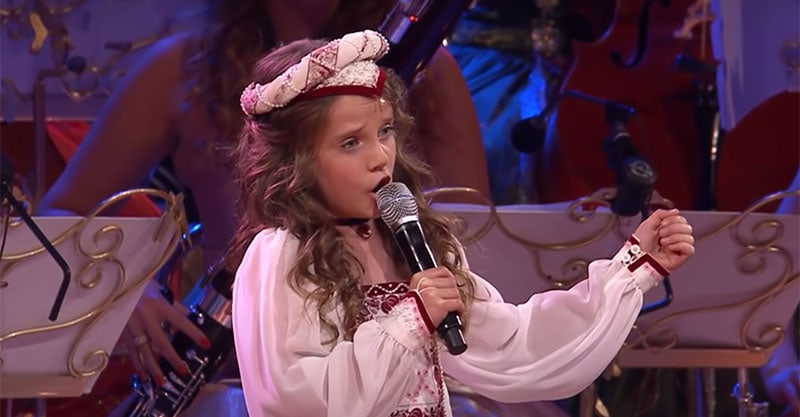
Andrew Lloyd Webber – Think Of Me
The Phantom Of The Opera is perhaps the most modern and recent example of an opera on this list. Compared to many of the operas on this list, The Phantom Of The Opera is an opera that even non-opera fans are familiar with.
There are so many choice cuts from this 1986 opera that is worth mentioning on this list. However, the most-enduring example that remains a popular choice for classical singers is Think Of Me.
Alexander Borodin – Polovtsian Dances
Price Igor is one of Russia’s greatest operas, though it isn’t as nearly well-known around the rest of the world. The opera was to be the last composition Borodin worked on, and was unfinished until 3 years after his death when revisions were made to allow it to be performed.
A song that is often performed outside of the context of the opera is Polovtsian Dances. This song moves through many different tempos and feels, some of which will dazzle you with its energetic fervor.
Pyotr Ilyich Tchaikovsky – The Tempest OP. 18
If you’re only vaguely familiar with Tchaikovsky, there’s a fair chance you’ve encountered The Tempest at some point in time. As the name would suggest, this specific opera is based on the iconic Shakespeare work of the same title.
This is one of those pieces that is ideal for a relaxing listening session when you have minimal distractions. Its fantasy nature is bound to take you places within your imagination.
Gaetano Donizetti – Il Dolce Suono
Depicting one’s descent into madness is something that was quite popular throughout many operas. One powerful song that is sung during such a scene is Il Dolce Suono, from Donizetti’s opera, Lucia Di Lammermoor.
This soprano aria is quite moving in the sense that it has a sort of ominous feeling to it. The strings hang in a seemingly suspended tension while the voice commands a presence that will have you completely moved.
Carl Orff – O Fortuna
Some opera songs have found their way into pop culture, often being featured in films when appropriate. One of the most popular that features an entire chorus is Carl Orff’s song, O Fortuna.
You will recognize this song immediately from its towering, powerful introduction. From there, the song has a sort of rolling nature, which builds in intensity until erupting into a climactic release.
If you’re in a choir that sings with an orchestra, this is most likely in your repertoire.
Franz Schubert – Ave Maria
All of the sopranos reading this article are probably all too familiar with Franz Schubert’s iconic song, Ave Maria. This is a song that has transcended its original opera altogether and is usually performed as a standalone solo piece.
Ave Maria has a very distinct vocal melody that has the unique knack of pulling on the heartstrings. Because of its religious lyrics, Ave Maria is often heard at funerals before saying goodbye one last time.
Jacques Offenbach – Belle Nuit O Nuit D’Amour
If you’re a fan of memorable operatic duets, you might already be familiar with Offenbach’s Belle Nuit O Nuit D’Amour. The song comes from The Tales Of Hoffman, which debuted in 1881 and would be his last opera.
Compositionally, Belle Nuit O Nuit D’Amour is modeled in the style of songs that gondoliers would sing when navigating their gondolas. Its melody is so memorable that its essence even found its way into a recent Bob Dylan song released in 2020.
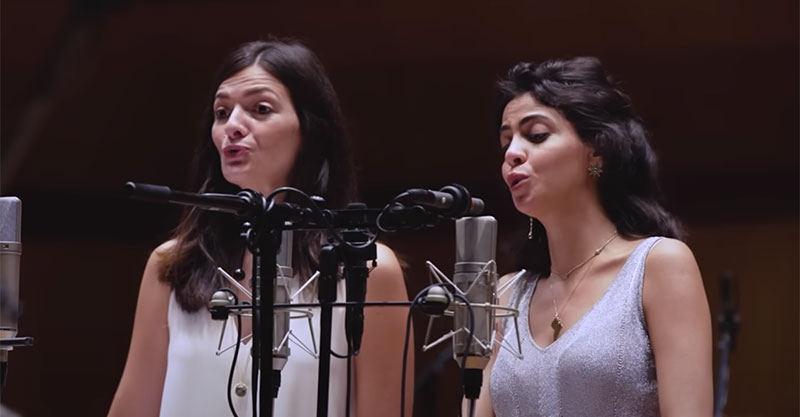
Wolfgang Amadeus Mozart – Dies Irae
We’ve already mentioned how Mozart’s Requiem, his final work, is a colossal composition. The third section, Sequentia, opens up with a movement called Dies Irae that should be recognizable to anyone.
This movement opens with an eruption of stern, powerful energy, which could be used to summarize that signature opera sound so many think of. For many, Dies Irae is their favorite section of this entire composition.
Giuseppe Verdi – Prelude To Act III
Are you familiar with the author, Alexandre Dumas? The name is familiar for The Three Musketeers, and The Count Of Monte Cristo.
What you might not know is that his son was actually a popular playwright in Paris, with one of his works being adapted to the opera by Giuseppe Verdi. Prelude To Act III comes from this opera, entitled La Traviata, which debuted in 1853.
Georges Bizet – Chanson Du Toreador
Many would agree that Carmen has some of the best music out of any opera. Most of the songs could easily be extrapolated from the opera and sung without its context, and they would still be enjoyable.
Chanson Du Toreador is a song that has certainly found its way into mediums well beyond its original intent. There’s a signature melody that you’d recognize if you’ve ever watched your Saturday morning cartoons.
Georges Bizet – Au Fond Du Temple Saint
When thinking of Bizet and opera, Carmen is rightfully what he is most known for. However, Bizet composed a number of popular operas, including 1863’s The Pearl Fishers.
In fact, this specific opera has one of the best duets in all of operatic history, featuring a part for both a baritone and a tenor. If you attend an opera showcase, you can almost bet without reservation on the fact that you’ll likely hear this song.
Edvard Grieg – Solveig’s Song
Edvard Grieg is a name that actually isn’t commonly associated with the opera. But, because his compositions are incredibly cinematic and almost visual, it makes sense that Grieg would take a crack at an opera.
His work for the 1867 opera, Peer Gynt, stands out in his catalog of compositions, with Solveig’s Song being an excellent selection. This particular soprano aria is almost extremely delicate in its delivery, which immediately fills the listener with wonder.
Georges Bizet – Carillon
Are you tired of hearing about Georges Bizet yet? The fact that he’s been mentioned so many times should be a glaring indicator that you need to investigate his works fully.
Carillon is a suite that comes from one of Bizet’s least popular operatic compositions but has found life outside of its original context. If you’re looking to be taken on a journey through contrasting emotions in the span of a few minutes, Carillon will certainly deliver.
Felix Mendelssohn – A Midsummer Night’s Dream Overture, Op. 21
Felix Mendelssohn must have had an affinity for Shakespeare’s play, A Midsummer Night’s Dream. Over the course of his career (ironically at the beginning and end), he made a composition for the play.
The one he wrote as a young composer, A Midsummer Night’s Dream Overture, is a feat that is almost unimaginable considering its complexity. Mendelssohn was only 17 years old at the time that he put these notes to paper.
Given this fact, it’s quite obvious that Mendelssohn was on a completely different level compared to his peers.
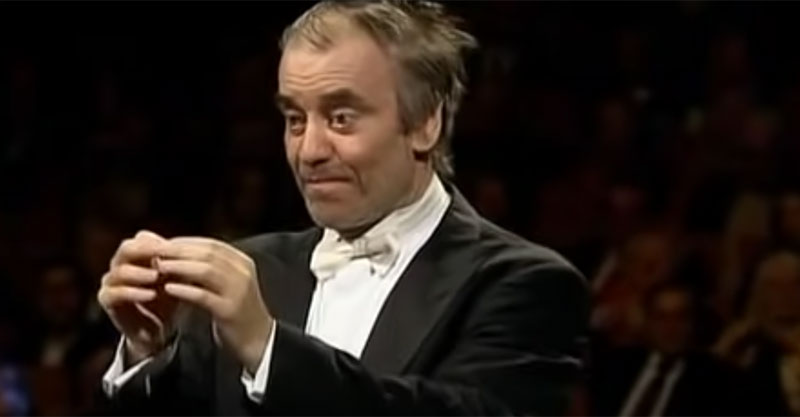
G.F. Handel – Ombra Mai Fu
Not every opera has to be popular in order for a piece of music to become famous and popular performance selections. Such is the case with the 1738 opera, Xerxes, which was, by all accounts, a blunder of an opera that only ran for a handful of performances.
Thanks to some educated musicians, Ombra Mai Fu would end up being rediscovered in the following century. Today, it’s one of the most popular arias designed for the male voice, despite the fact that it was written with a castrato in mind.
Giuseppe Verdi – La Donna È Mobile
Sometimes, composers know that they have a magical song up their sleeve before they’ve even had it performed. Verdi knew that La Donna È Mobile would be one of these songs, forcing his entire cast to agree to keep the song a secret until its first performance.
His intuition proved to be correct, with La Donna È Mobile being the standout moment for audiences who attended a performance of Rigoletto. It has since become embedded in the fabric of pop culture.
Eduardo Di Capua, Alfredo Mazzucchi, Giovanni Capurro – ‘O Sole Mio
‘O Sole Mio is an interesting operatic piece in terms of copyright and its melody. Initially, the song was credited solely to Eduardo Di Capua, without any mention of Alfredo Mazzucchi, with whom Di Capua had frequently collaborated.
Mazzucchi’s daughter eventually recognized the work in her father’s collection and eventually, the proper credit was given. As a result, the iconic melody in ‘O Sole Mio will remain copyrighted and barred from the public domain until the year 2042, 144 years after it was written.
Wolfgang Amadeus Mozart – The Queen Of The Night Aria
Mozart has a reputation for having composed soprano arias that are notoriously difficult to master. A fine example of this is with his aria, The Queen Of The Night (often titled Der Hölle Rache), from his 1791 opera, The Magic Flute.
In terms of length, this particular aria is rather short, which is probably to the benefit of the soprano singing it. This aria is notable for its bouncing melody that covers an extremely high range of the singer’s voice.
Gioachino Rossini – William Tell Overture
Operatic songs featured in cartoons are nothing new and are largely responsible for the reason people are familiar with certain melodies. One of the most popular operatic works to be featured in such a manner is Rossini’s William Tell Overture.
Portions of this work have distinct styles, all of which have been utilized to convey certain things within these cartoons. Looney Toons cartoons and Disney’s Fantasia are just 2 popular examples where you’ve likely heard this song.
Giacomo Puccini – Nessun Dorma
If you’re a classically trained tenor, it’s quite probable that you’ve labored to add Puccini’s Nessun Dorma to your repertoire. It is, by far, one of the most popular selections for the tenor voice.
Nessun Dorma comes from Puccini’s opera, Turandot, which remained unfinished and did not debut until 1926. The piece is notable for the climactic ending that features the tenor voice belting out in the high vocal range at full volume.
Gioachino Rossini – Largo Al Factotum
For an opera to be comedic, its music often has to be ridiculous, and that’s precisely what you could label Largo Al Factotum as. This extremely famous tenor aria comes from Rossini’s 1775 opera, The Barber Of Seville, and is sung by the character, Figaro.
There’s a good chance you’re familiar with this song that says “Figaro” numerous times in different delivery styles and vocal ranges, though you might never have known its title. Surprisingly enough, after almost 250 years, Largo Al Factotum is still as ridiculously funny as it was back in Rossini’s day.
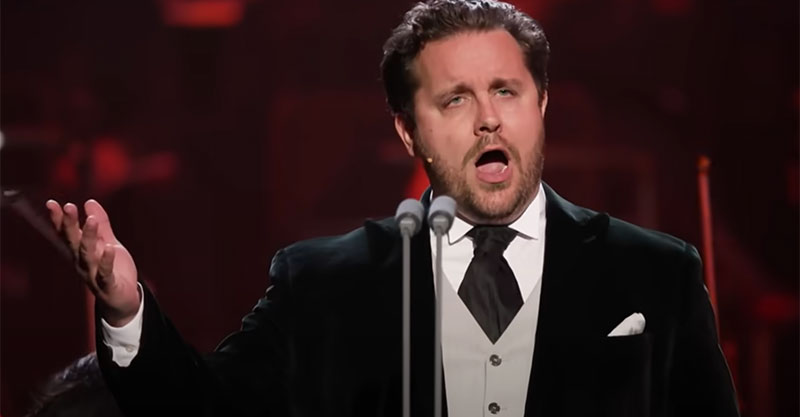
Alessandro Parisotti – Se Tu M’ami
Parisotti is a name we haven’t mentioned yet in this article, though Se Tu M’ami remains a popular aria sung by modern classical singers. Because of the mood of the song, many might interpret the lyrics to convey sadness.
However, this is more about someone not wishing to make a commitment to someone else. In fact, it’s been said that Se Tu M’ami was sung by parents to their daughters to instill a bit of relationship wisdom.
George Gershwin – Bess, You Is My Woman Now
George Gershwin is a name that is synonymous with American music of the 1920s and 1930s. Given his range of work, it isn’t all that surprising to see an opera in his catalog of compositions.
1935’s Porgy and Bess is well-known today, but at the time of its premiere, it didn’t become a hit. However, some songs have transcended the opera altogether, with Bess, You Is My Woman Now, being one of them.
Gabriel Fauré – Notre Amour
To the average commoner who is only vaguely familiar with classical music, Gabriel Fauré is known for Clair De Lune. Notre Amour is a song often sung by tenors or baritones and features an expressive range set against a piano that weaves a tapestry in its accompaniment.
Sure, Fauré might not be as big of a name as Chopin, but he is considered one of the most influential composers of the 20th century.
Giuseppe Verdi – Anvil Chorus
Considering how many times he’s been mentioned thus far, Giuseppe Verdi may as well be considered the star of operatic composers. He seemed to possess a remarkable talent for crafting memorable melodies that range in all degrees of mood.
Anvil Chorus is an especially upbeat, cheerful chorus song that comes from his opera Il Trovatore, which debuted in 1853.
Giacomo Puccini – Un Bel Dì, Vedremo
Puccini’s Un Bel Dì, Vedremo is a standout soprano aria that comes from his 1904 opera, Madama Butterfly. The song has a very gentle feel with long, sweeping motions to carry the listener into a state of bliss and wonderment.
George Gershwin – Summertime
https://www.youtube.com/watch?v=O7-Qa92Rzbk
If there’s one song that has become a modern staple, it’s George Gershwin’s Summertime, from Porgy And Bess. Even the reggae dub group, Sublime has had massive success with their cover version of this song.
You’d have to live under a rock not to have heard this song before!
Top Opera Songs, Final Thoughts
Thanks to written music, opera has found a life existing far beyond the time period any particular piece was written. Yet, despite many operas being written over a century ago, the emotional expression remains unparalleled.
It’s safe to say that operatic songs will continue to be a staple in the repertoire of classical singers. After listening to these songs, you’ll likely want to pay a visit to the theater the next time an opera takes place in your region.